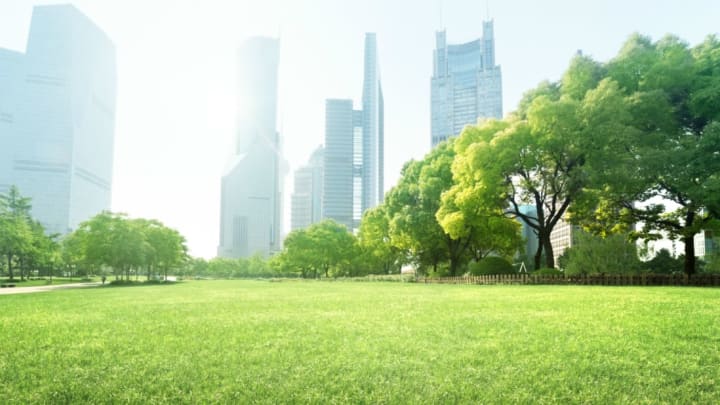Trees Save Big Cities $500 Million Each Year

As if you really needed another reason to hug a tree: Scientists writing in the journal Ecological Modeling say trees in big cities deliver more than $500 million in environmental benefits every year.
A tree is a marvel of biology. Unfussed by the pull of gravity, it sucks water upward; unembarrassed by its resourcefulness, it makes food out of the waste gases we leave behind. And that’s just what it does for itself; for us, it does even more, cleaning our air, beautifying our neighborhoods, improving our health and well-being, reducing our energy use, and helping us beat the heat.
"Trees have direct and indirect benefits for cooling buildings and reducing human suffering during heat waves," lead author Theodore Endreny of the SUNY College of Environmental Science and Forestry said in a statement. "The direct benefit is shade which keeps the urban area cooler, the indirect benefit is transpiration of stormwater which turns hot air into cooler air."
Endreny and his colleagues wondered how these qualitative effects might translate into dollars, or rubles, or rupees. The researchers used a tool called i-Tree Eco to estimate the amount of tree cover in 10 huge cities: Beijing, Buenos Aires, Cairo, Istanbul, London, Los Angeles, Mexico City, Moscow, Mumbai, and Tokyo.
These densely packed megacities are home to almost 10 percent of the entire human population of Earth—people whose lives often depend on natural environments outside city limits.
“What is, however, most often disregarded,” the authors note, “is that nature conservation in the city can also contribute to human well-being benefits. The most common mind set separates cities from the rest of nature, as if they were not special kinds of natural habitats.”
Their results showed that those urban natural habitats occupied about 21 percent of each megacity landscape. That’s a lot of tree cover, but there could be a lot more; on average, the researchers found another 19 percent of land that could be given over to vegetation.
The data suggested that filling this space with trees could increase environmental and cost benefits by an average of 85 percent.
As they are now, the trees are already saving megacities gobs and gobs of money—about $1.2 million per square mile, or $35 per resident, per year.
"Placing these results on the larger scale of socioeconomic systems makes evident to what extent nature supports our individual and community well-being by providing ecosystem services for free," co-author Sergio Ulgiati of Italy’s University Parthenope said in the statement.
"A deeper awareness of the economic value of free services provided by nature may increase our willingness to invest efforts and resources into natural capital conservation and correct exploitation, so that societal wealth, economic stability and well-being would also increase."